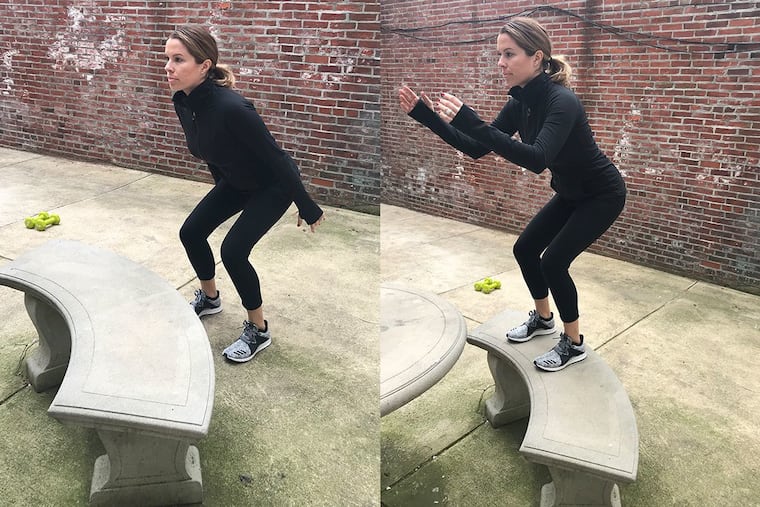3 strength training moves for a stronger stride
Strength training is the key to unlocking your peak pavement pounding power.

Is your body race-day ready? The Broad Street Run, Philadelphia’s favorite 10-mile race, is only a few short weeks away. For most runners, the obvious training method for mastering this course is running. And although cardio is key in preparing the body for the blocks of Broad Street, the real ace up your sweaty sleeve will come from strength training.
Strength training will promote your pavement-pounding performance. Because running is a high-impact, repetitive exercise, muscle and joint injuries can develop from overuse. At this point in your training, it’s likely you’ve started to notice common running side effects, such as tight hamstrings, a stiff lower back, or tender ribs. By incorporating strength-training exercises, sensitive spots become more stable as the entire body works to generate more force.
Below are three exercises that every runner should do.
For best results, repeat this circuit three times on the days you aren’t running.
Walking lunge
The best way to improve your stride is to strengthen the muscle groups responsible for running. The walking lunge is an effective toning tool because it mimics the body’s mechanics of running while helping correct muscle imbalances, and develop flexibility and coordination.
For beginners, start by using your body weight and practice perfecting your posture and form. Once you feel comfortable with the lunge, incorporate free weights for an added challenge.
Stand tall, feet hip-width apart, gripping a dumbbell with each hand. Let your arms rest at your sides and engage your core throughout the entire exercise.
Take a step forward with your right foot, lowering your body so both knees form a 90-degree angle. Your right ankle should be aligned below your knee. Keep your toes pointed forward with your body weight resting in your right heel.
Push through your right heel, bringing your feet together, then take a step forward with your left foot and lower into a lunge. Continue this walking sequence for 30 total lunges (15 reps per leg).
Box jumps
Plyometric exercises help to develop and enhance fast-twitch muscle fibers responsible for explosive strength, fast feet, cardio capacity, and overall endurance. Since this jumping pattern has your feet landing on an elevated platform, it lessens the impact, which makes it easier on the joints than a standard leap.
Box jumps require a sturdy surface. Start with a low, manageable box height, then progress to a higher elevation when ready.
Begin with your feet shoulder-width apart. Hinge back at your hips, bending your knees slightly, and drawing your arms back behind your body.
Swing your arms forward for momentum as you jump up onto the platform. Remember to land lightly and avoid allowing your knees to buckle inward.
Protect your joints by stepping down one foot at a time. Repeat 8-10 times.
Plank rotations
Running is a continuous forward motion. When developing a cardio training routine, it’s important to incorporate exercises that take the body through other mobility patterns, such as rotation. Doing so helps strengthen the body and prevent injuries.
Start in a forearm plank position, with your shoulders aligned above your elbows and your body forming a straight line from head to heels.
Slowly rotate your body and extend your left arm overhead until you are in a side plank. Your feet should be stacked on top of each other with your arm positioned at shoulder height.
Lower your arm and twist back to the starting position, then repeat this movement on the opposite side. Continue this rotation pattern for 20 total repetitions (10 per side).
A well-rounded training routine is the best way to hit your stride.
Ashley Blake Greenblatt, ACE-CPT, is a certified personal trainer and wellness coach. To learn more, visit ashleyblakefitness.com.